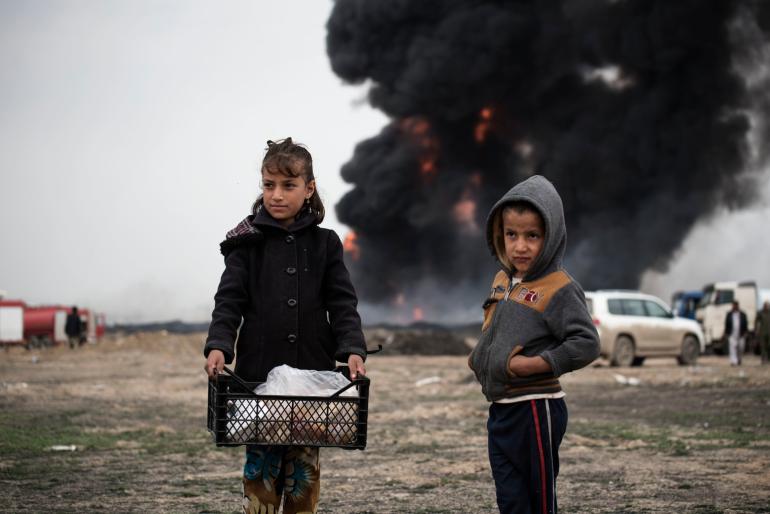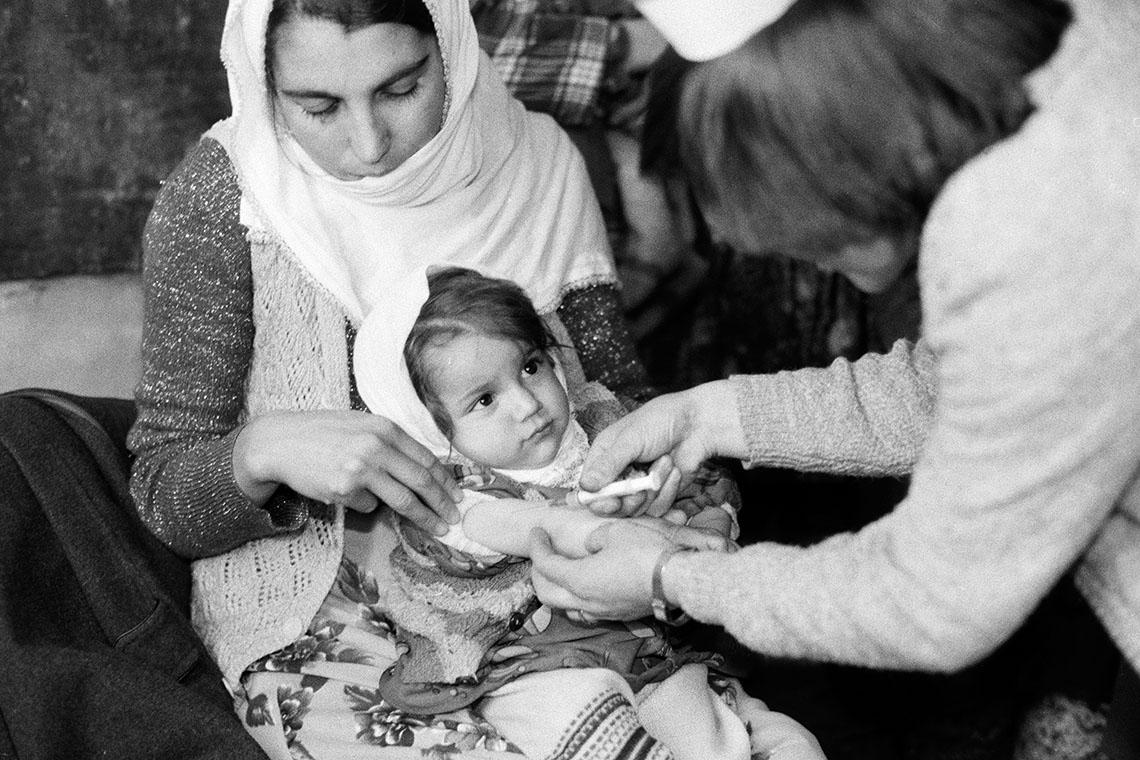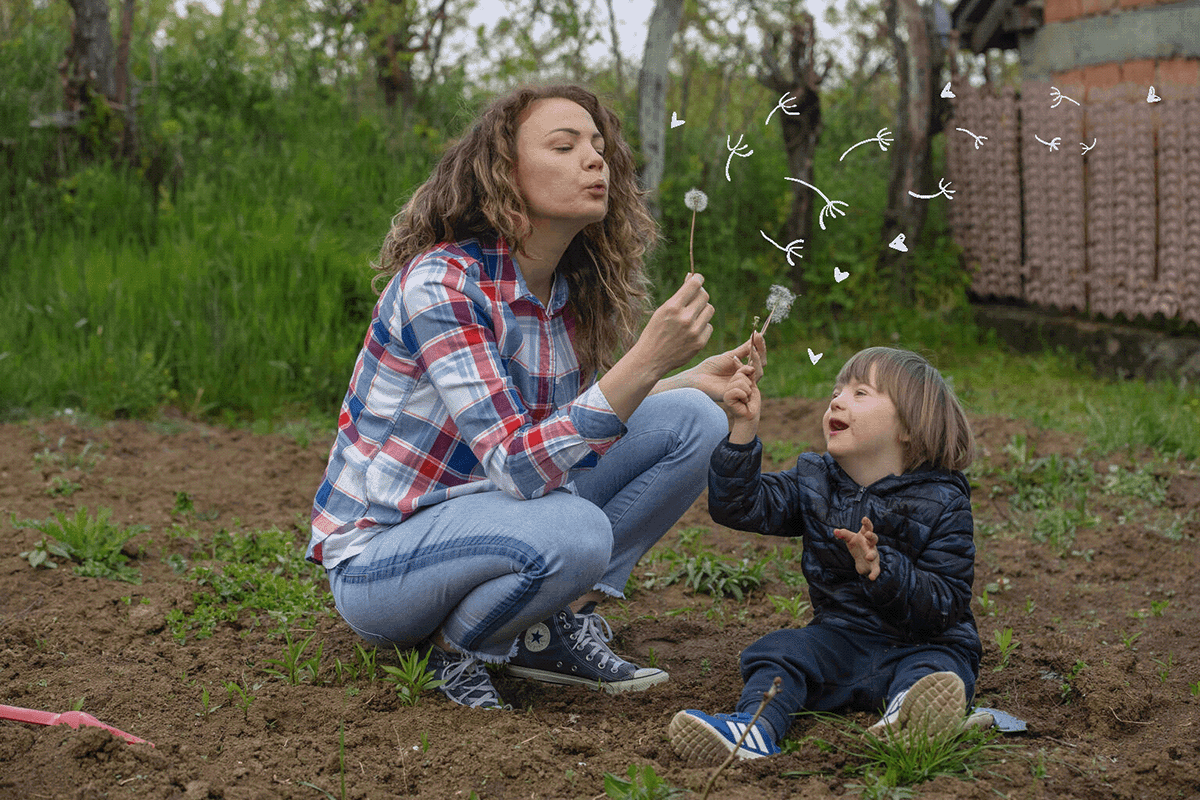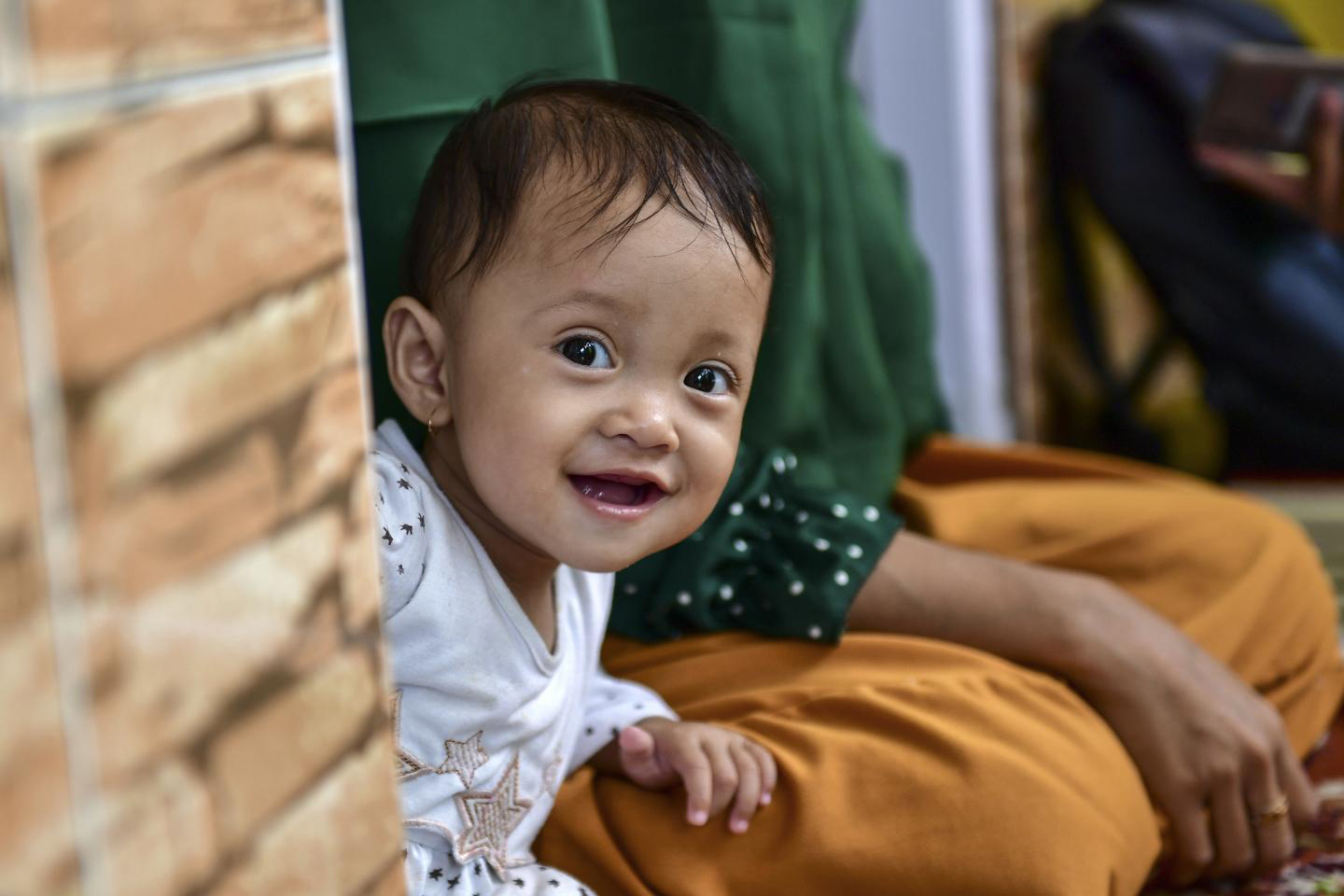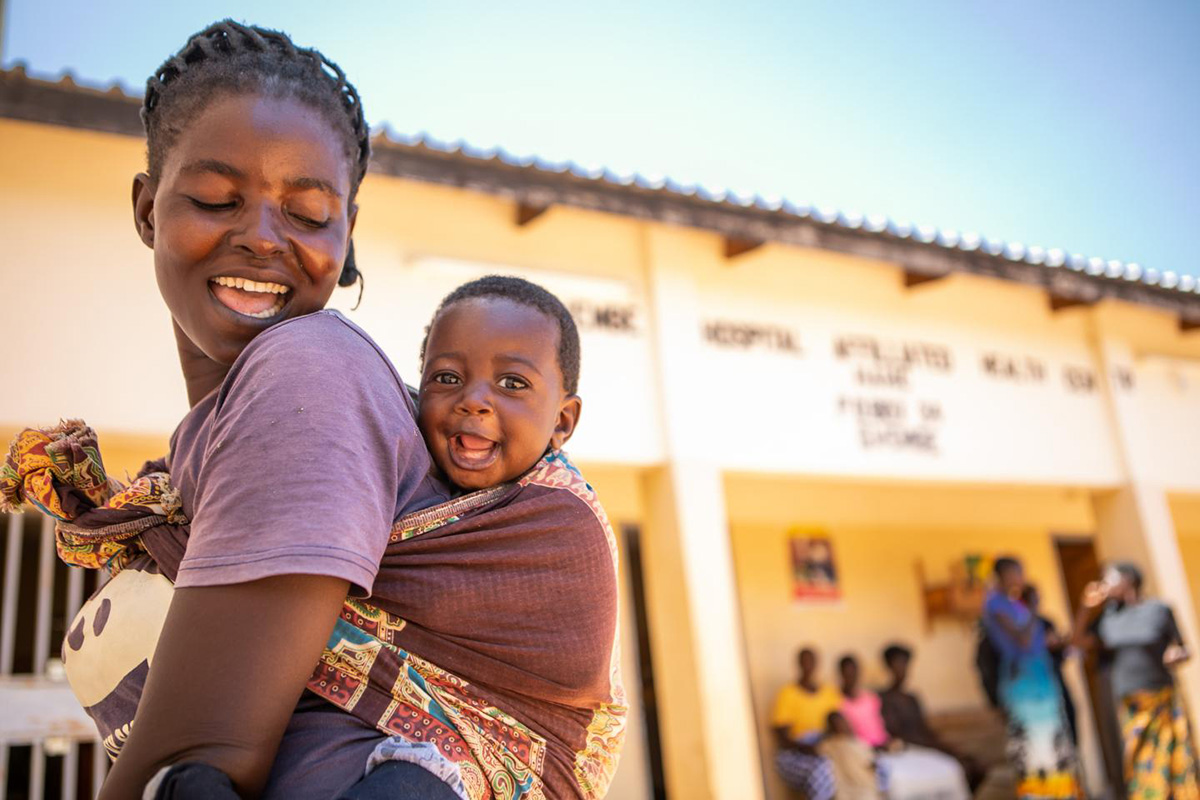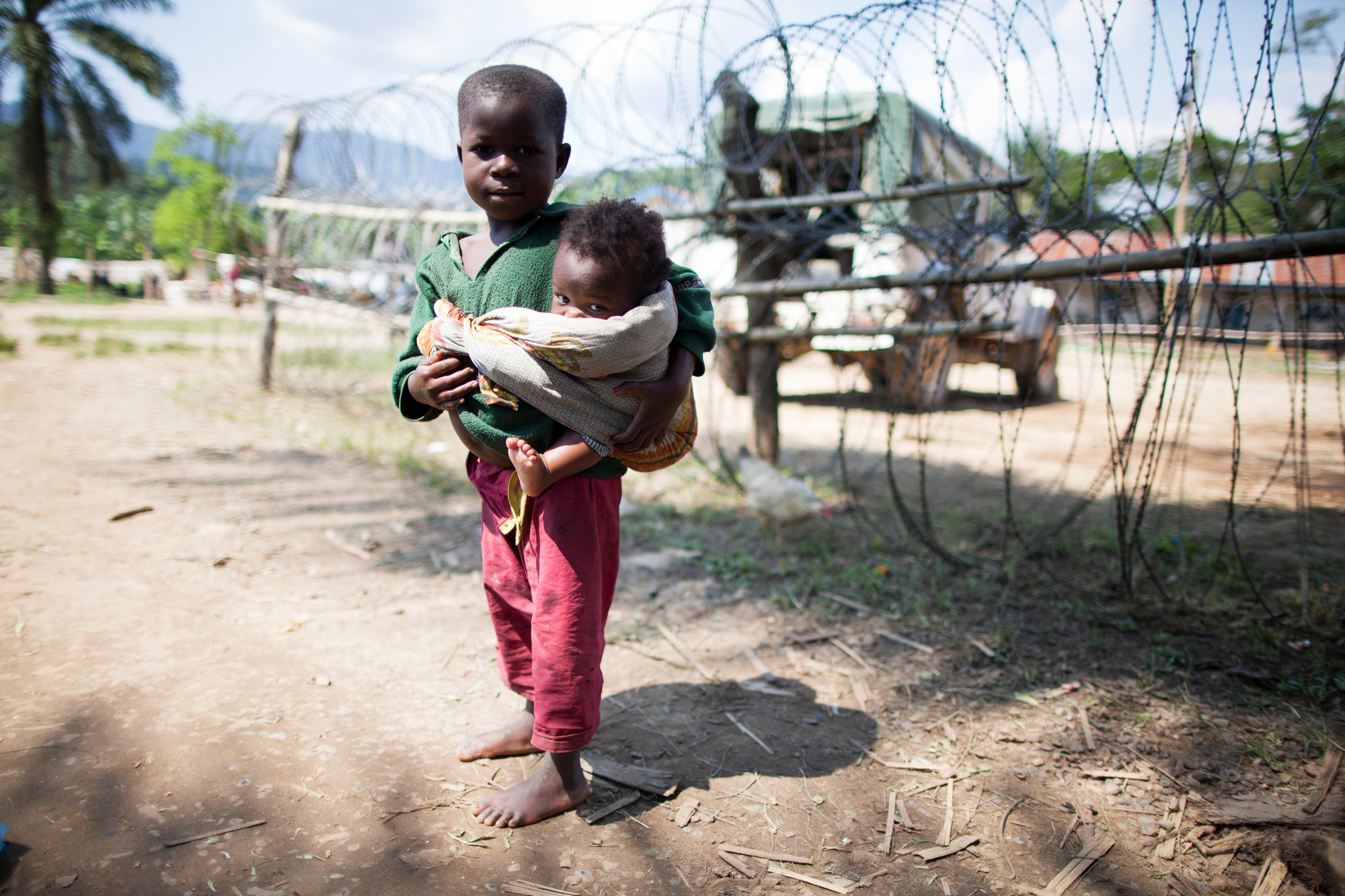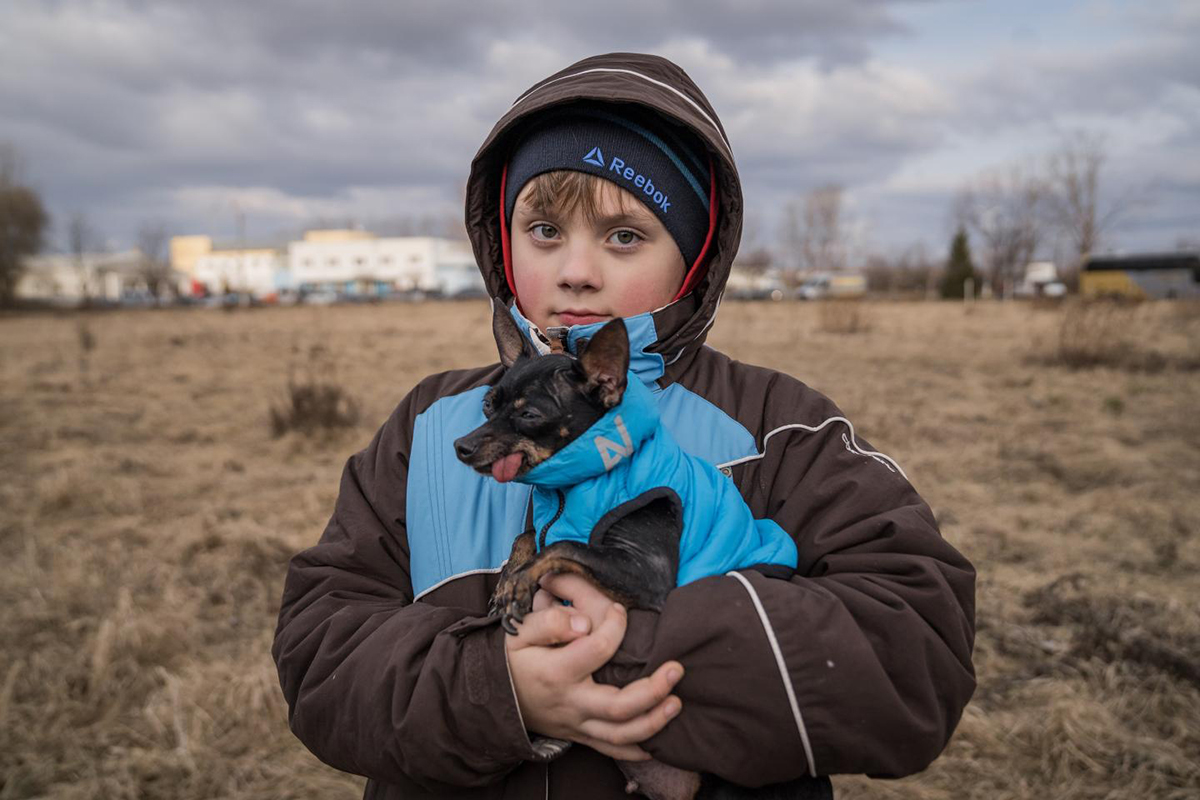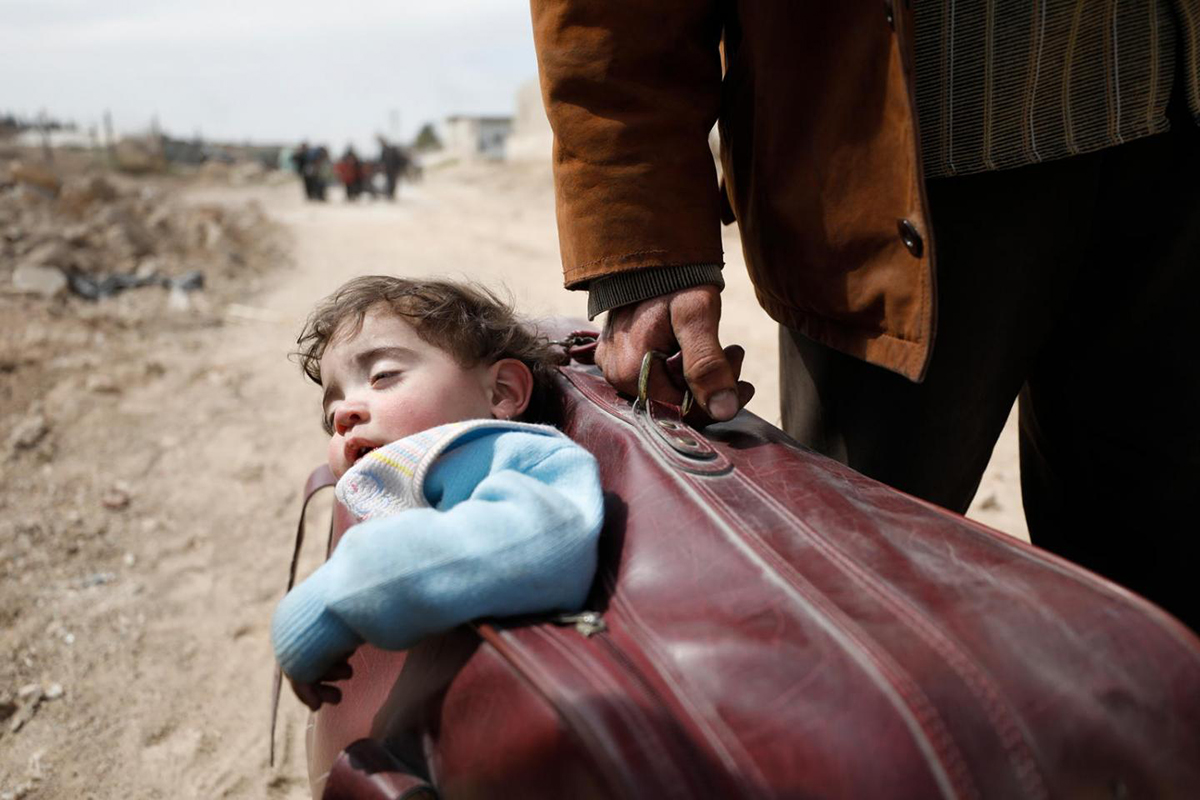Between 2005 and 2020, the United Nations verified over 266,000 grave violations against children committed by parties to conflict situations across Africa, Asia, the Middle East, and Latin America. The data comes from a new UNICEF report – 25 years of children and armed conflict: Taking action to protect children in war. This figure is a fraction of the violations believed to have occurred, as access and security constraints, and the shame, pain, and fear that survivors suffer often hamper the reporting, documentation and verification of grave violations.
Images are a testament to the decades-long work UNICEF has been carrying out to ensure that essential supplies reach children and their families. In 1987, a small girl, held by her mother, is vaccinated by a nurse in the village of Köskköy, Turkey. This was part of the final round of a UNICEF-supported child immunization campaign, delivered through UNICEF’s Child Survival and Development Revolution, a global initiative launched in the early 1980s.
In cotton-growing communities of Pakistan, many children were working in the fields because they were deprived of accessible schools. Therefore, the CLEAR Cotton project partnered with the local government and civil society to set up education centres at their doorsteps. The CLEAR Cotton project is co-funded and implemented by the ILO and partners.
Our mental health is a fundamental part to our overall health and well-being. UNICEF brings expert tips and resources to help parents support their child's and their own mental health.
100 days of war in Ukraine has caused one of the fastest large-scale displacements of children since World War II.
Severe wasting, also known as ‘severe acute malnutrition’, is an excruciatingly painful condition – which is caused by a lack of nutritious food and repeated bouts of diseases such as diarrhoea, measles and malaria – that affects millions of children. Children with severe wasting are thin and frail. Their immune systems are weak, leaving them vulnerable to developmental delays, disease and death. UNICEF works with partners across the globe to support the early detection and treatment of children with wasting and other life-threatening forms of malnutrition.
It is a sad reality that in situations where armed conflict breaks out, it is the most vulnerable members of societies – namely children, who are most affected by the consequences of war. During armed conflict, children may be forced to flee their homes, some torn from their families and exposed to exploitation and abuse along the way. They may be recruited by armed forces. Especially for girls and women, the threat of gender-based violence soars. On the International Day of Innocent Children Victims of Aggression the United Nations affirms its commitment to protect the rights of children.
Children are the most vulnerable in times of armed conflict. Wars and hostilities deprive them of their lives, families, homes, essentially from their very childhood. Despite the horrors they have endured, children have a chance to recover from atrocities and become positive agents of change in their communities. The photo exhibit “From Despair to Hope: Children Beyond Armed Conflict,” organized by the Office of the Special Representative of the Secretary-General for Children and Armed Conflict, aims at reflecting on the complexity of the lives of children amidst conflict, emphasizing both the tragedy and the faith in a better future.
It’s early morning and mothers and their children are arriving at the Family and Child Support Centre for young children from vulnerable families. Waiting inside are social workers who are getting ready to welcome the children. The centre in Istaravshan is one of four converted residential childcare institutions, known as Baby Homes in Tajikistan. With UNICEF’s support, the spaces have been transformed into family centres where vulnerable children can access community and family-based support without being institutionalized.
Hi kids! Come and join us for the last episode of Online Safety with Sango. In this episode we will talk about how to stay safe while watching videos on online! Stay safe, stay tuned, and engage online! Check out more Sango materials.
The war in Ukraine poses an immediate and growing threat to the lives and well-being of the country’s 7.5 million children. Humanitarian needs are multiplying by the hour as fighting intensifies. Children continue to be killed, wounded and deeply traumatized by the devastating violence all around them. Families are terrified, in shock, and desperate for safety. UNICEF is working with partners to reach vulnerable children and families with essential services – including health, education, protection, water and sanitation – as well as life-saving supplies.
Oleksandra's chilling video diary shows the grave dangers children and young people are facing in Ukraine. UNICEF and partners are working through COVID-19 and conflict to provide urgent support to families. They need peace now.
Amid growing international condemnation over Russia’s military offensive in Ukraine, tens of thousands of people are still trying to escape to neighbouring countries, fleeing en masse. This has brought huge numbers to the western Ukrainian city of Lviv, where UNICEF’s spokesperson James Elder has been giving an update on the emotional and tense scenes he’s witnessed, to UN News’s Daniel Johnson.
At the age of 13, Younis left school to help his family but suddenly found himself recruited into an armed group in Sudan. Younis managed to escape, and UNICEF and partners were there to help him reunite with his family and reintegrate safely back to his community. Through conflict , UNICEF is working across the world to release and reintegrate children recruited by armed groups.
Millions of children are on the move. Some are driven from their homes by conflict, poverty or climate change; others leave in the hope of finding a better life. Far too many encounter danger, detention, deprivation and discrimination on their journeys, at destination or upon return. UNICEF works around the world to help protect the rights of migrant and displaced children by providing life-saving humanitarian supplies in refugee camps. UNICEF also collects, analyses and disseminates data and gathers evidence about the situation and individual experiences of children on the move.

